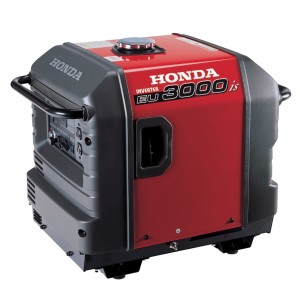 Honda’s lineup of engines has been specifically designed to stand the test of time, and it’s not uncommon to see the company’s engines still in use several decades after they’ve been purchased. Even so, engines do require a great deal of care and maintenance, and they’re all prone to experience an issue with proper functioning, or even efficiency, from time to time. Diagnosing these problems is no easy task, because there are so many small parts that lie within the engine, and there are so many fluids and metrics that can affect overall performance.The key is to simply troubleshoot the engine using a trial-and-error approach, working to fix potential problems until the engine is back on track.
Honda’s lineup of engines has been specifically designed to stand the test of time, and it’s not uncommon to see the company’s engines still in use several decades after they’ve been purchased. Even so, engines do require a great deal of care and maintenance, and they’re all prone to experience an issue with proper functioning, or even efficiency, from time to time. Diagnosing these problems is no easy task, because there are so many small parts that lie within the engine, and there are so many fluids and metrics that can affect overall performance.The key is to simply troubleshoot the engine using a trial-and-error approach, working to fix potential problems until the engine is back on track.
What to Consider if the Engine Simply Will Not Start
Perhaps the most common problem, and the one that causes the largest amount of panic in any engine owner, is the engine simply refusing to start. Though it might seem like this is the worst possible scenario, it’s actually a rather common problem that can be solved by something as simple as adding fuel or exchanging an old air filter for one that is quite a bit cleaner and therefore friendlier to the engine ignition process.
If a Honda engine won’t start, no matter how much effort is put into it, there are a few key things that owners should consider.
– Check the level of fuel currently in the engine, and consider the age of the fuel being used. Old fuel can often become watered down or ineffective, while a simple lack of fuel will certainly cause problems with ignition.
– Check the air filter for a significant amount of dirt or debris that might be preventing the fuel from being exposed to oxygen. As most equipment owners know, oxygen is the key to a healthy spark and an engine that starts with ease.
– Make sure that the spark plug is not fouled, damage, or encrusted with carbon emissions. If it is, either clean the spark plug or replace it with an OEM option sold by Honda through its nationwide network of authorized retailers.
– Ensure that the engine’s switches, knobs, and other settings, are in the proper position for the engine to turn on. This includes making sure that the fuel valve is open, that the choke is switched to the “on” position, and engine stop switch is also set to “on.” If any of these switches and knobs is not in the proper position, the engine simply will not start.
– Check the amount of oil currently contained within the engine. An excessively low amount of oil will cause the engine to remain off despite the operator’s best efforts, essentially to protect the engine from damage.
If any of these solutions does not fix the problem, then it’s likely that the engine is suffering from a serious mechanical flaw that should probably be addressed by a nearby mechanic or an authorized Honda retailer.
As with all problems that affect Honda engines, serious mechanical defects, as well as fouled parts, should be addressed as soon as possible in order to contain the problem and preserve the engine.
Poor Engine Efficiency: How to Restore Honda’s Ideal Power and Performance
One of the characteristics that sets Honda engines apart from the competition is the company’s commitment to overall engine efficiency. More than virtually any other engine brand on the market, Honda’s approach uses less fuel, provides more power, and runs more quietly. This smooth operation, though, sometimes suffers when air filters are clogged or other problems begin to affect how the engine operates. If the engine has been burning through fuel noticeably faster, or has been operating at a louder overall volume, there are some key things to check.
– Check the engine’s air filter to ensure that a proper amount of oxygen is reaching the fuel. Also check the oil filter, as a clogged filter can significantly reduce lubrication and have a dampening effect on the engine’s performance, power, and efficiency.
– An aging spark plug can wreak havoc long before it affects whether or not the engine actually starts. To combat a loss of efficiency, replace an old or worn spark plug with a new, OEM alternative.
– Check the carburetor for clogs and other damage, and replace it if necessary.
HondaLawnParts.com Has What Engine Owners Need When Troubleshooting Common Problems
The key to a long lasting, healthy Honda engine is to make sure that its various parts are in good shape. That means checking oil and fuel levels, keeping in mind the age of the engine’s oil and fuel products, and checking filters and spark plugs for dirt, damage, and overall age. With careful maintenance and an eye for detail, it’s easy to troubleshoot the most common engine problems and avoid contacting a mechanic to solve the issue at hand.
